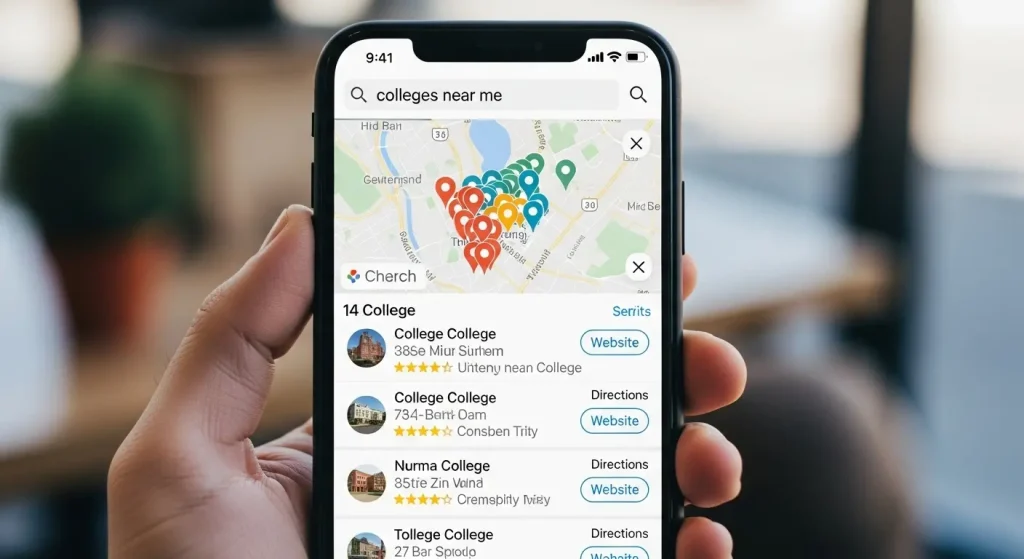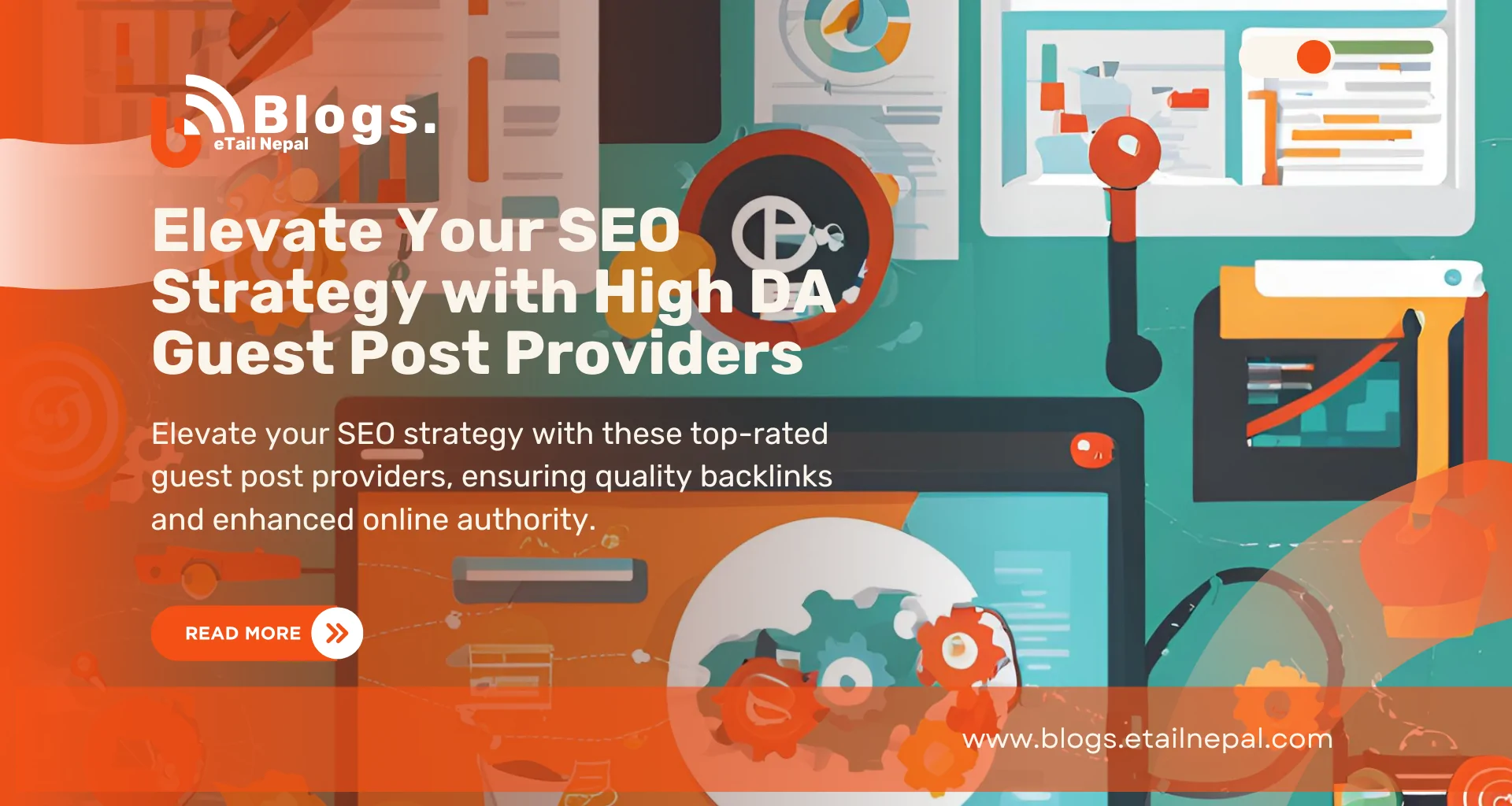In today’s digital-first world, the journey to finding the right educational institution begins online. For schools, colleges, and universities, being visible where prospective students and parents are searching is no longer just an option—it’s essential.
This is where education SEO comes into play, a powerful strategy to enhance your online presence and connect with your target audience effectively. By optimizing your website for search engines, you can significantly increase your visibility, build credibility, and ultimately, drive enrollment.
This guide will walk you through the most effective education SEO strategies for 2025 and beyond. You will learn how to conduct impactful keyword research to understand what your audience is searching for.
We will explore how to create high-quality, engaging content that resonates with prospective students and aligns with Google’s E-E-A-T guidelines.
You’ll discover the importance of local SEO for attracting students in your geographic area. We will also cover the technical aspects of SEO that ensure your website is user-friendly and easily crawlable by search engines. Finally, you will understand how to build a strong backlink profile to establish your institution’s authority.
Understanding the Importance of SEO in the Education Sector

In a competitive academic landscape, a robust SEO strategy is a game-changer for educational institutions. The primary goal of higher education SEO is to improve your website’s visibility on search engine results pages (SERPs), making it easier for potential students to find you. When someone searches for courses, programs, or institutions like yours, you want to be at the top of the list, and a well-executed SEO plan makes that possible.
Boosting Organic Traffic and Visibility
A significant portion of website traffic comes from organic search. This highlights the immense opportunity that SEO presents for colleges and universities. By targeting relevant keywords that prospective students are actively searching for, you can drive qualified traffic to your website. Increased visibility not only leads to more website visits but also establishes your institution as a credible and reliable source of information in the competitive education niche.
Enhancing Brand Awareness and Credibility

Ranking high in search results does more than just increase traffic; it builds brand awareness and trust. When your institution consistently appears for relevant searches, it reinforces your brand’s authority and reputation. This increased recognition fosters a sense of credibility among prospective students and their families, making them more likely to consider your institution for their educational journey.
Gaining a Competitive Edge
In the crowded education market, standing out is crucial. An effective SEO strategy allows you to cut through the competition and capture the attention of your target audience. Securing top positions in Google for key search terms can significantly impact your click-through rates, giving you a distinct advantage over other institutions vying for the same students.
Foundational Keyword Research for Educational Institutions

Keyword research is the cornerstone of any successful SEO strategy, especially in the education sector. It involves identifying the terms and phrases that prospective students and parents use when searching for educational opportunities. A thorough understanding of these keywords allows you to create targeted content that directly addresses the needs and queries of your audience, significantly improving your chances of ranking higher in search results.
Identifying Your Target Audience’s Search Intent
Before diving into keyword tools, it’s crucial to understand the intent behind the searches. Are users looking for general information about a field of study, specific degree programs, or admission requirements? By mapping out the student journey, you can identify different types of search intent and tailor your keywords and content accordingly, from broad, informational queries to more specific, transactional ones.
Utilizing Keyword Research Tools
Several tools can assist you in your keyword research process. Google Keyword Planner is an excellent starting point for discovering new keywords and getting data on search volumes and competition. For more in-depth analysis, tools like Ahrefs, SEMrush, and Moz Keyword Explorer offer valuable insights into competitor strategies and keyword difficulty, helping you identify opportunities to outrank them.
Focusing on Long-Tail Keywords
While broad keywords are important, long-tail keywords (phrases of three or more words) are often more effective for attracting highly targeted traffic. For example, instead of targeting “business degree,” a long-tail keyword like “best undergraduate business programs in Nepal” will attract a more specific and qualified audience. These keywords typically have lower competition and higher conversion rates, making them a valuable part of your education SEO strategy.
Creating High-Quality, E-E-A-T Friendly Content
In the realm of education SEO, content is king. But not just any content will do. To rank well and resonate with your audience, your content must be high-quality, informative, and demonstrate Expertise, Experience, Authoritativeness, and Trustworthiness (E-E-A-T), a framework used by Google to evaluate content quality. This is particularly crucial for educational institutions, which fall under Google’s “Your Money or Your Life” (YMYL) category.
Developing a Strategic Content Plan
A successful content strategy starts with a plan. This involves identifying your target audience, understanding their pain points, and creating content that provides solutions and answers their questions. Your content should be strategically designed to guide prospective students through every stage of their decision-making process, from initial research to application. This includes creating detailed program pages, informative blog posts, and engaging student testimonials.
Crafting Compelling and Informative Content

Your content should be written for humans first and search engines second. Use clear, concise language and a friendly, conversational tone to make complex information easy to understand. Incorporate real-life examples, personal experiences, and credible statistics to add depth and value to your content. High-quality, long-form content that provides comprehensive information on a topic tends to perform well in search rankings and establishes your institution as a thought leader.
Showcasing Expertise and Building Trust
To align with Google’s E-E-A-T guidelines, it’s essential to showcase your institution’s expertise and build trust with your audience. This can be achieved by featuring author bios with credentials for your blog posts, referencing authoritative sources, and regularly updating your content to ensure it’s accurate and current. Displaying genuine student testimonials and reviews can also significantly enhance your trustworthiness.
The Power of Local SEO for Schools and Universities
For educational institutions with a physical campus, local SEO is a critical component of a comprehensive digital marketing strategy. It involves optimizing your online presence to attract students from a specific geographic area. With a significant number of searches having local intent, ensuring your institution appears in local search results is key to reaching prospective students in your community and surrounding regions.
Optimizing Your Google Business Profile

Your Google Business Profile (GBP) is a powerful tool for local SEO. Claiming and optimizing your profile with accurate and up-to-date information, including your institution’s name, address, and phone number (NAP), is the first step. Regularly updating your profile with posts, photos, and events, and encouraging reviews from students and alumni can significantly boost your local search visibility.
Creating Location-Specific Pages
If your institution has multiple campuses or serves specific regions, creating dedicated location-specific pages on your website is essential. These pages should be optimized with local keywords, such as “best engineering college in [City Name],” and provide relevant information for students in that area. This targeted approach helps you rank higher in local searches and provides a better user experience for prospective students.
Building Local Citations and Backlinks
Consistent NAP information across online directories and citation sites is crucial for local SEO. Listing your institution in reputable local and educational directories helps search engines validate your location and improves your local search ranking. Building backlinks from local businesses, community organizations, and local news websites can also enhance your local authority and drive relevant traffic to your site.
Technical SEO for a Seamless User Experience

Technical SEO forms the foundation of a strong online presence, ensuring that your website is not only discoverable by search engines but also provides a positive user experience for visitors. For educational websites, which often have complex structures and a large volume of content, paying attention to the technical aspects of SEO is paramount. A technically sound website loads quickly, is easy to navigate, and is accessible on all devices, all of which are important ranking factors.
Ensuring Mobile-Friendliness
With a majority of online searches now happening on mobile devices, having a mobile-friendly website is non-negotiable. Google uses mobile-first indexing, meaning it primarily uses the mobile version of your site for ranking and indexing. A responsive design that adapts seamlessly to different screen sizes ensures a good user experience for mobile users and is crucial for your SEO success.
Optimizing Page Speed
Page speed is a critical ranking factor that directly impacts user experience. Slow-loading pages can lead to high bounce rates, as users are likely to leave if a page takes too long to load. Optimizing images, minifying code, and leveraging browser caching are some of the ways you can improve your website’s loading speed and enhance the user experience.
Implementing Structured Data (Schema Markup)
Structured data, or schema markup, is code that you can add to your website to help search engines better understand your content. For educational institutions, this can be particularly beneficial for highlighting key information like courses, programs, reviews, and events directly in the search results. This can lead to richer search snippets, improved click-through rates, and a competitive advantage.
Building a Strong Backlink Profile
In the world of SEO, backlinks—links from other websites to yours—act as votes of confidence. They are a crucial ranking factor, signaling to search engines that your website is a credible and authoritative source of information. For educational institutions, building a strong backlink profile is essential for improving search rankings, driving referral traffic, and establishing your institution as a leader in its field.
The Value of .edu and Reputable Backlinks
Backlinks from .edu and .gov domains are highly valued by search engines due to the inherent trust and authority of these domains. While acquiring these links can be challenging, they can significantly boost your website’s authority. Additionally, earning backlinks from reputable industry publications, well-known blogs, and respected organizations within the education sector can greatly enhance your backlink profile.
Strategies for Earning Quality Backlinks
There are several effective strategies for acquiring high-quality backlinks. Guest posting on relevant and authoritative blogs allows you to share your expertise and include a link back to your website. Creating valuable and link-worthy content, such as original research, in-depth guides, and infographics, can naturally attract links from other websites. Collaborating with other educational institutions and industry partners on projects or events can also lead to valuable backlink opportunities.
Leveraging Digital PR and Outreach
Digital PR involves creating compelling stories and content that journalists and bloggers will want to cover, naturally earning you backlinks in the process. This could include promoting new research findings, highlighting unique student success stories, or sharing expert commentary on trending topics in education. Proactive outreach to relevant websites and publications to share your valuable content can also be a highly effective link-building tactic.
Measuring SEO Success and Adapting Your Strategy
Measuring the performance of your education SEO efforts is crucial for understanding what’s working, identifying areas for improvement, and demonstrating the return on your investment. By tracking key metrics and regularly analyzing your data, you can make informed decisions to refine and adapt your strategy for long-term success. This data-driven approach allows you to continuously optimize your campaigns and achieve your enrollment goals.

Key Performance Indicators (KPIs) to Track
Several key performance indicators (KPIs) can help you measure the success of your SEO strategy. Organic traffic growth shows you how many visitors are finding your website through search engines. Keyword rankings indicate your visibility for important search terms. Conversion rates, such as form submissions for inquiries or applications, demonstrate the direct impact of your SEO efforts on your enrollment goals.
Utilizing SEO Analytics Tools
A variety of tools are available to help you track and analyze your SEO performance. Google Analytics is an essential tool for monitoring website traffic, user behavior, and conversion rates. Google Search Console provides valuable insights into your keyword performance, click-through rates, and any technical issues that may be affecting your site’s visibility. For more advanced analysis, platforms like Ahrefs and SEMrush offer comprehensive data on backlinks, competitor performance, and keyword rankings.
Regular Reporting and Continuous Improvement
Regularly reviewing your SEO data and creating performance reports is key to a successful strategy. This allows you to identify trends, understand the impact of your optimizations, and communicate your results to stakeholders. Based on these insights, you can continuously refine your approach, experiment with new tactics, and adapt to changes in search engine algorithms and user behavior to ensure your education SEO strategy remains effective and drives sustainable growth.
Conclusion
In an increasingly digital world, a strategic approach to education SEO is fundamental for any educational institution looking to thrive. By focusing on comprehensive keyword research, creating high-value content that adheres to E-E-A-T principles, leveraging the power of local SEO, ensuring technical excellence, and building a robust backlink profile, you can significantly enhance your online visibility and attract a steady stream of qualified prospective students. Remember that SEO is not a one-time task but an ongoing process of optimization and adaptation.
By consistently measuring your performance and refining your strategies based on data-driven insights, you can stay ahead of the competition and achieve your enrollment objectives.
Ready to boost your institution’s online presence and drive enrollment? Explore more with https://blogs.etailnepal.com/ and let us help you unlock the full potential of education SEO.
FAQs Section
1. Why is SEO important for educational institutions?
SEO is crucial for educational institutions because it increases their online visibility, making it easier for prospective students and parents to find them through search engines like Google. It helps drive organic traffic, builds brand credibility, and ultimately leads to higher enrollment rates by connecting with an audience that is actively searching for educational programs.
2. What is the difference between general SEO and education SEO?
While both share the same fundamental principles, education SEO is specifically tailored to the unique needs and goals of schools, colleges, and universities. This includes focusing on keywords related to academic programs, degrees, and admissions, as well as leveraging strategies like local SEO to attract students to a physical campus and building authority within the academic community.
3. How long does it take to see results from education SEO?
SEO is a long-term strategy, and it can take several months to see significant results. Initial improvements in rankings and traffic can often be seen within 4 to 6 months, but achieving and maintaining top positions for competitive keywords requires ongoing effort and a sustained commitment to best practices.
4. What are the most important ranking factors for education websites?
Key ranking factors for education websites include high-quality, relevant content that demonstrates E-E-A-T (Expertise, Experience, Authoritativeness, and Trustworthiness), a strong backlink profile from reputable sources, a mobile-friendly and fast-loading website, and a positive user experience. For institutions with a physical location, local SEO signals are also critically important.
5. How can I measure the success of my education SEO campaign?
The success of an education SEO campaign can be measured by tracking key performance indicators (KPIs) such as organic traffic, keyword rankings, click-through rates, and conversion rates (e.g., application form submissions, campus tour requests). Tools like Google Analytics and Google Search Console are essential for monitoring these metrics and gaining insights into your campaign’s performance.
6. What is local SEO, and why does it matter for schools?
Local SEO is the practice of optimizing your online presence to be more visible in local search results. It is vital for schools because many students and parents search for educational institutions within a specific geographic area (e.g., “best high school near me”). A strong local SEO strategy helps you connect with this highly relevant local audience and drive enrollments from your community.





